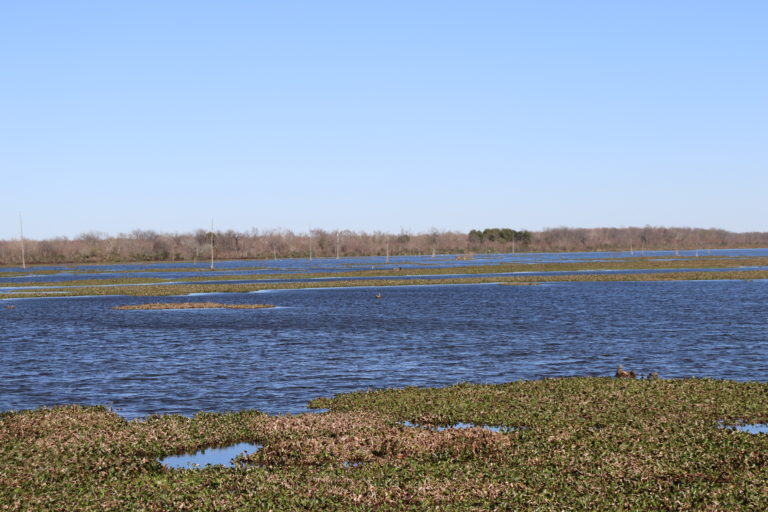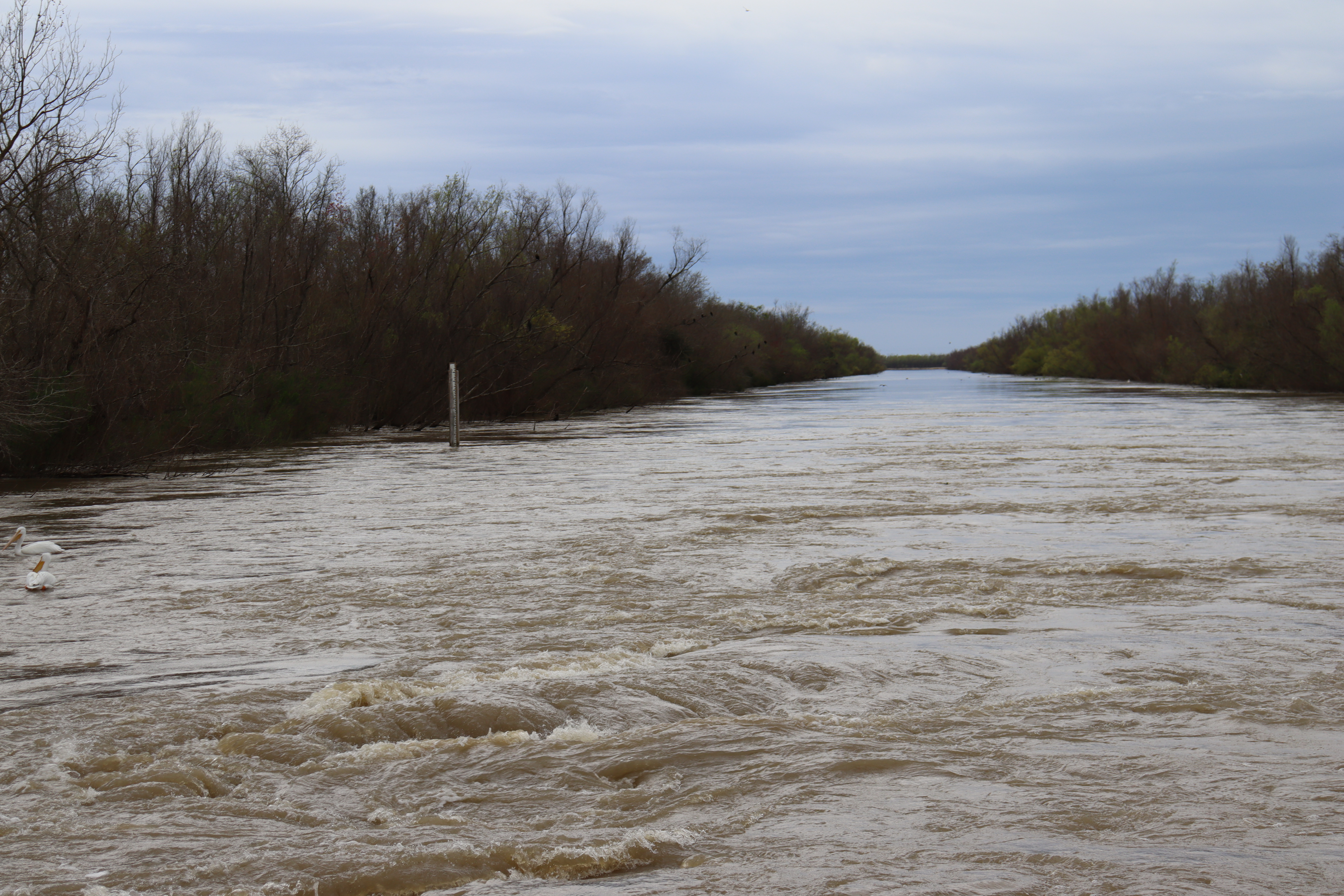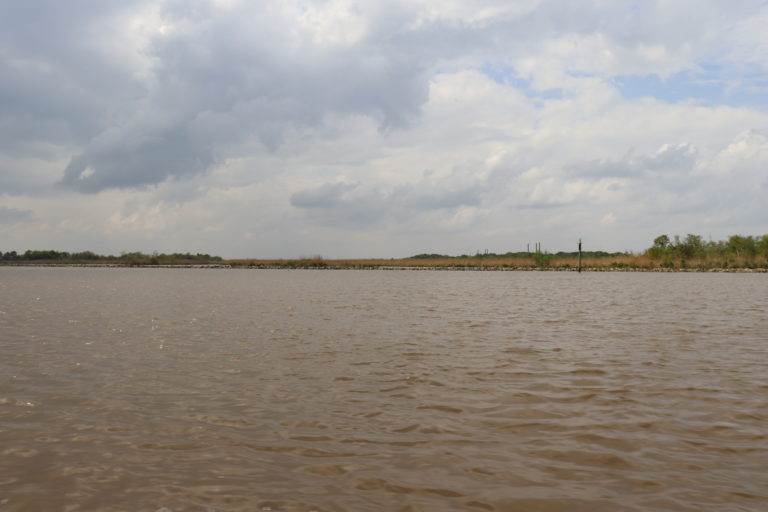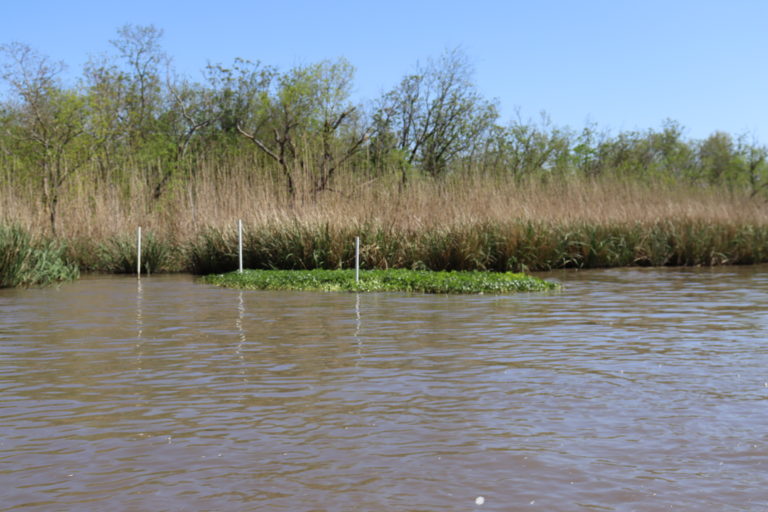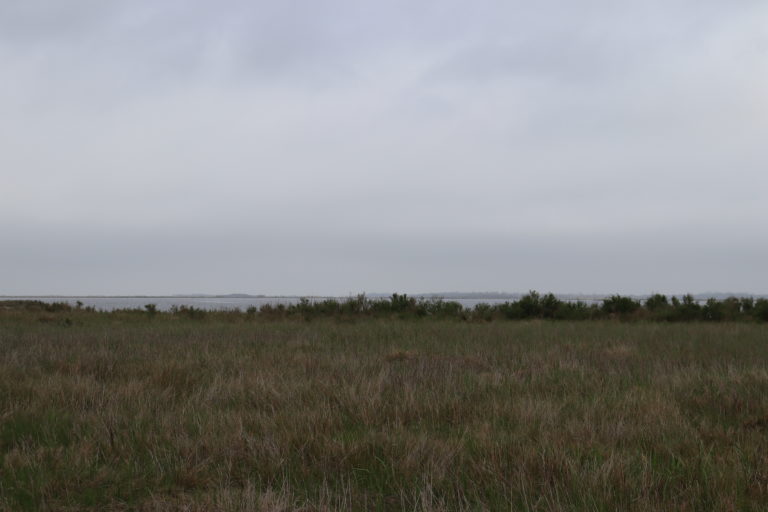Mississippi River
History
The Caernarvon Freshwater Diversion Project has been an ongoing man-made project in Plaquemines Parish since August 1991. This project was designed to periodically bring in freshwater, which is triggered by the salinity of the southeast Pontchartrain Basin. The site was initially opened by the US Army Corps to support the oyster industry which relies on freshwater supply, but is now presently run by the Coastal Protection and Restoration Authority.
Tour
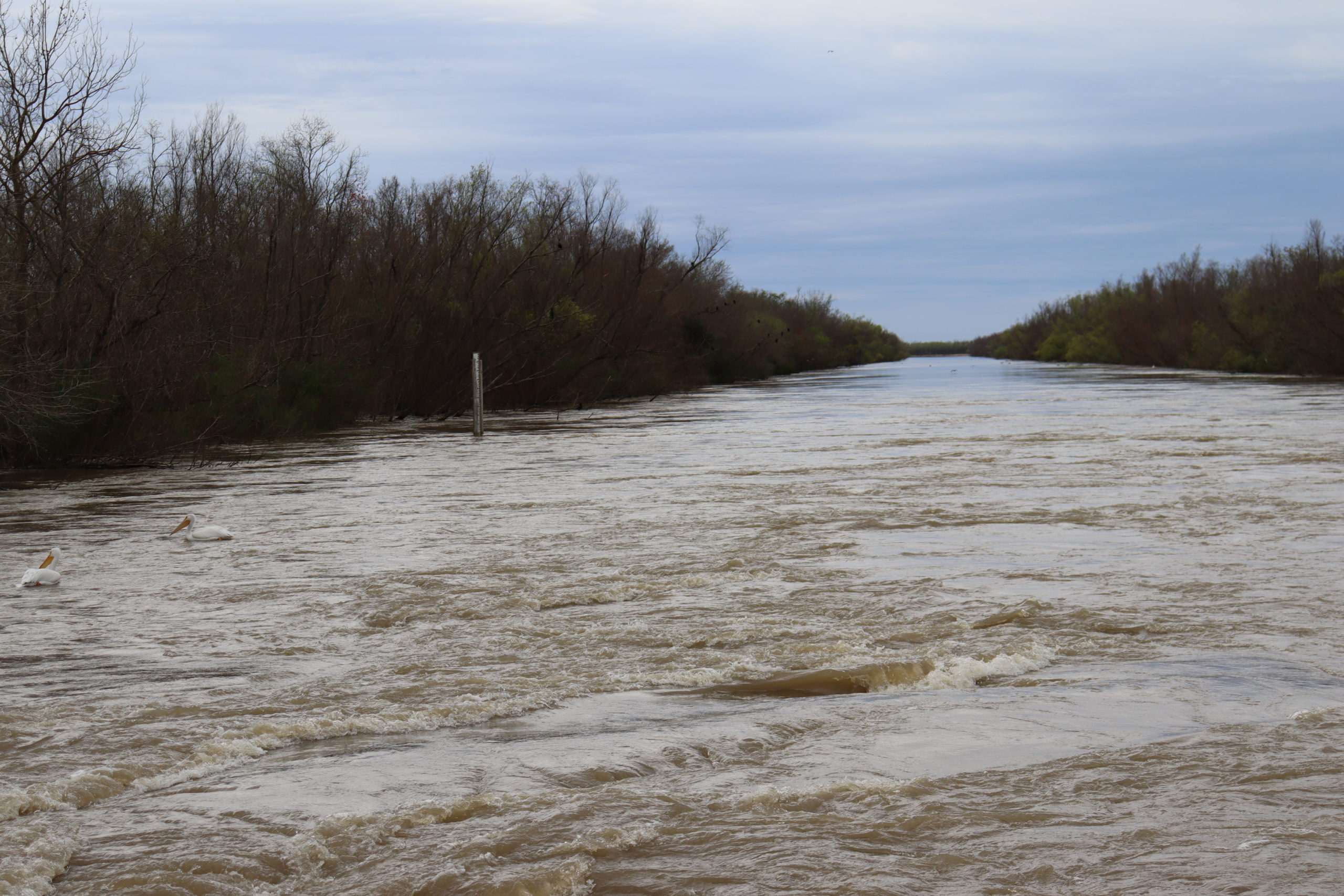
On February 10, 2023, we took a tour of Mardi Gras Pass. It was about 60 degrees, raining, and windy that day. The UL group arrived in Plaquemines Parish at around 10 AM, stopping at the Caernarvon Diversion before Mardi Gras Pass. Before getting to the actual pass the group split up and filed into several boats, from the boats changes in the environment and wildlife could be easily seen. As the boats got closer to Mardi Gras pass, the trees got taller, the water got browner from all the sediments, and the canal got wider.
Expert
Coastal scientist and Coast Guard boat captain Adam Songy explained that the Caernarvon Diversion has a maximum flow rate of 8,000 cubic feet per second (flow rate 7,300 cubic feet per second at the time of the tour). He explained that when the salinity of the basin reaches a particular level, the Coastal Protection and Restoration Authority triggers the release of freshwater into the diversion project. Since the freshwater only encompasses 10% of the river water column, not much sediment is produced; however, it was revealed by recent surveys that approximately 800-1,000 acres of land has been produced since the site’s construction in 1991. Songy also explains that biodiversity is able to flourish as a result of this diversion project, seeing an increase in native animals such as otters and alligators that are able to thrive in freshwater and its incoming nutrients.
Interview Findings
One interviewee shared a positive outlook on the diversion project and distributaries. While they shared that some people they know have an issue with the project for fishing opportunities, they express that fish diversity wouldn’t be as extensive as it is without this project. They explained that the future of our coast relies on these projects.
“You want to look at a coast, look at yourself in the mirror. You’re going to change tomorrow. We’re organic. We’re not like rocks. Rocks don’t change. Organic things do,”
-INTERVIEW B5.1
Another interviewee shared their concern over land loss. Over their interview they explained that they and their family are native to the area and intend on staying here, but land loss threatens this. They also explained that floodgates, as seen in this site, are necessary for protection against flooding and to serve as a marker for those on the other side of the gate that are unsupported and need flood insurance. They shared that the monetary costs and the risks associated with Louisiana’s flooding issue is not sustainable for families, and therefore for the coast.
“It may not be feasible to live down here,”
-INTERVIEW B6
Another interview talked about how building this pumping system made the water supply move slower, which wasn’t good for most of the community. This pumping system stopped a lot of the wetlands (sediment, marsh, etc) from flowing in the community’s backyard. It made residents very upset because this was where the community would fish. Taking down the levees would benefit because with it it’s stopping some flow of the sediment from being brought in through bays and lakes in peoples’ backyard. Without the levees and building pumps, free flowing water would be way better.
-INTERVIEW B4


